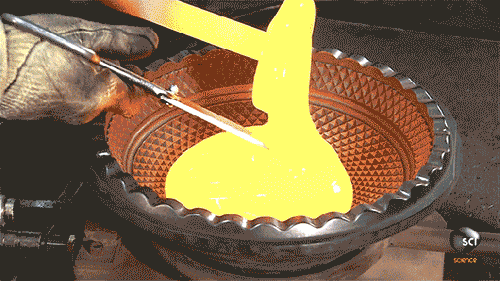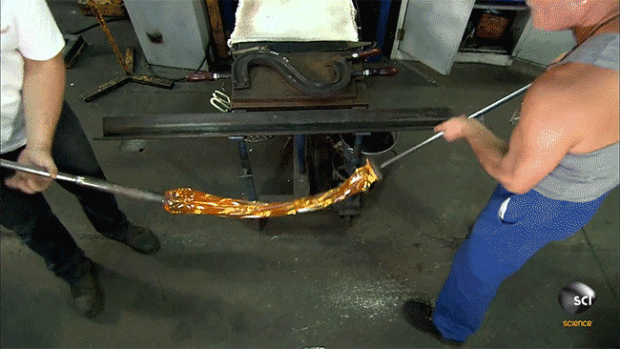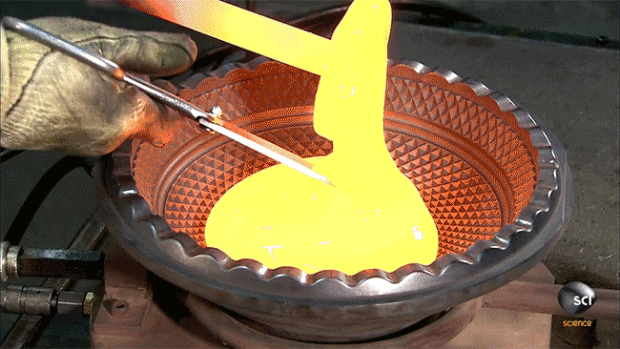
 Grand chandeliers are so monumentally spectacular that when you see one, you’re probably more likely to bask in its awesomeness than ponder the process from raw materials to finished fixture. Unless perhaps you’re a Maker. Or the Science Channel.
Grand chandeliers are so monumentally spectacular that when you see one, you’re probably more likely to bask in its awesomeness than ponder the process from raw materials to finished fixture. Unless perhaps you’re a Maker. Or the Science Channel.
In this episode of How It’s Made, the Science Channel shows us a glimpse inside Baccarat crystal studio, where master craftsmen carefully shape each piece of molten-hot crystal into ornate shapes and textures. The resulting 150-pound chandelier is more than 3’ tall and wide, has 24 arms, and is decorated with both red and clear crystal as well as a gilded hurricane shade.
The process is mesmerizing because not only does the crystal look like salt water taffy from an alternate dimension, but the ease at which the craftsmen execute their techniques makes the practice look deceptively simple.
The crystal is made by melting down silica sand, lead, potash, and a few other ingredients in a furnace. When it comes straight out, the crystal is glowing at an incredible 2,280°F. A crystal blower gathers some of the molten blob on the end of a large pole called a blow plane and uses blocks and molds to sculpt the crystal into the desired shape. A channel is made through the middle of the crystal for electrical wiring.
Then, two crystal blowers work from either end of a piece of crystal, stretching and twisting it from both ends to create the chandelier’s arms one by one (as shown in the first GIF). Once the diameter and design are exactly right, the soft putty-like crystal is placed in a mold so that each arm is curved precisely the same. The excess is snipped off of the ends and the crystal is left to cool.
To make the bowl on the bottom of the chandelier, a glob of molten crystal is placed in a mold that goes inside a press. For the hurricane shade, the crystal is elongated with pliers and is then literally inflated to fit a mold by way of a worker blowing through a tube.
To watch the whole process, check out the video below:
[via ThisIsColossal]
ADVERTISEMENT








